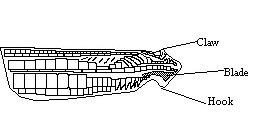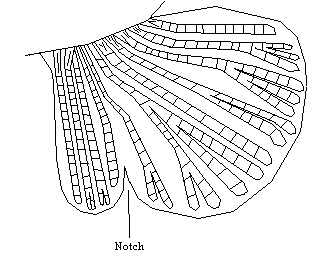 |
|
| Is your domain name available? |
|
|
Last updated Jan 1st 2002
|
|
|
What
is a Livebearing fish By
|
||||
|
What is a "livebearer"? Basically itís a fish that produces live fry
(this dose not mean "egg layers" do not produce fry but it dose means
the eggs produced is only egg yolk, oils, salt and genetic material,
it only becomes life when fertilization has occurred, which may occur
milliseconds after being laid). However in Anablepidae the sexual organ is still called an "gonopodium" but itís slightly different to the Poeciliidae species, the fin rays start off normally then the rays are twisted around each other forming a tube which sperm flows through during mating. |
||||
|
 |
||||
|
In Goodeidae species they still have a modified anal fin but this is very different to the Poeciliidae species, the male has a notch towards the front of the anal fin which is used it aid in the breeding procures and is called the "spermatopodium". |
||||

|
||||
|
The next stage is brooding the eggs, to this stage there are two types
of gesteration:- ii) External:- Once the eggs have been fertilized the eggs may be retained in the body for a time, then the eggs are released some fish like the rise fish (Oryzias latipes) carry the eggs then deposit the eggs on vegetation, in some species it has been seen that from one breeding a female can produce 3 or 4 broods. Then the eggs are left to hatch grow on like most other egg layers. Most people know of only four or five different types of livebearing fish; guppy, sword tail, platy, molly, and sharks these five types of livebearing fish do not even total 1 per cent of the total number of livebearing fish, there are about 950 different types of livebearing fish. There are two distinct families which are the Goodeidae and the Poeciliidae, there is two other less common families the Anablepidae and the Hemiramphidae. The Goodeidae family are a very nice looking fish, these fish are not so easy to sex as the Poeciliidae family, but you can sex them quit easily still, all males have a notch in the anal fin (the bottom fin just before the tail fin) the notch occurs with in the fist five fin rays, and some males have more colour in the body and fins in most species. The Poeciliidae is the largest family, these fish are probably the easiest to sex as the males have an highly modified anal fin. In species such as guppies the males have modified anal fin called the "gonopodium", this organ is used to insert packets of sperm into the females genital opening The Anablepidae, this is the smallest family of only 2 genus and 4 species of fish, which are the 3 species of Four-eyed fish and 1 species of One-sided livebearer. These fish are either left or right sided, a right sided male can only move his gonopodium to the right and thus can only breed with a left sided female. The males in the family are very small compared to the females, usually not even half the size of the female, but the fry are very large when born compared to most other livebeares. These fish can be sexed like the Poeciliidae but all of the anal fin is rolled up in to a tube. The last of the four families is the Hemiramphidae which to most people is the half-beaks, almost all freshwater livebeares come from the Americaís (North and South), but this family mainly come from Borneo, Java, the Philippines, Sumatra, the Celebes, and Malaysia. The fry are quite large when born ranging from 1-2 cm in length, this family is much harder to sex, most are sexed like the Goodiea family but some like the Hemirhamphodon pogonognathus is a bit different because the notch is at the back of the anal fin, NOT THE FRONT like most other livebeares. There are other livebearing fish like sharks and some characins, but I think that these four families will do for now! |
||||